The picture should give a good idea of what I would want to achieve. Ideally, the resulting colour bar would keep a continuous nature, i.e., should be based on a continuous rather than discrete aesthetic, or at least come very close to behave like it.
This also means, not just the simple approach of just bringing the legend keys of a discrete fill close enough together.
Yes, I could create a fake legend, but I'd like a solution that modifies at the legend drawing level.
I would be also very happy with interesting grid hacks!
library(ggplot2)
ggplot(iris, aes(Sepal.Length, y = Sepal.Width, fill = Petal.Length))+
geom_point(shape = 21) +
scale_fill_continuous() +
guides(fill = guide_colorbar(ticks.colour = "black"))
That's photoshopped, apologies!. I don't want to create the arrow, just the continuous scale with separators instead of ticks

The ultimate goal is to reproduce a color bar as orignially proposed in this thread

However, this is not about creating the discrete gradient bar, this is just about the separators!
The discrete gradient bar is not the problem, there are already solutions out there (e.g., https://stackoverflow.com/a/62544405/7941188, https://stackoverflow.com/a/62556763/7941188, https://stackoverflow.com/a/50540633/7941188)

